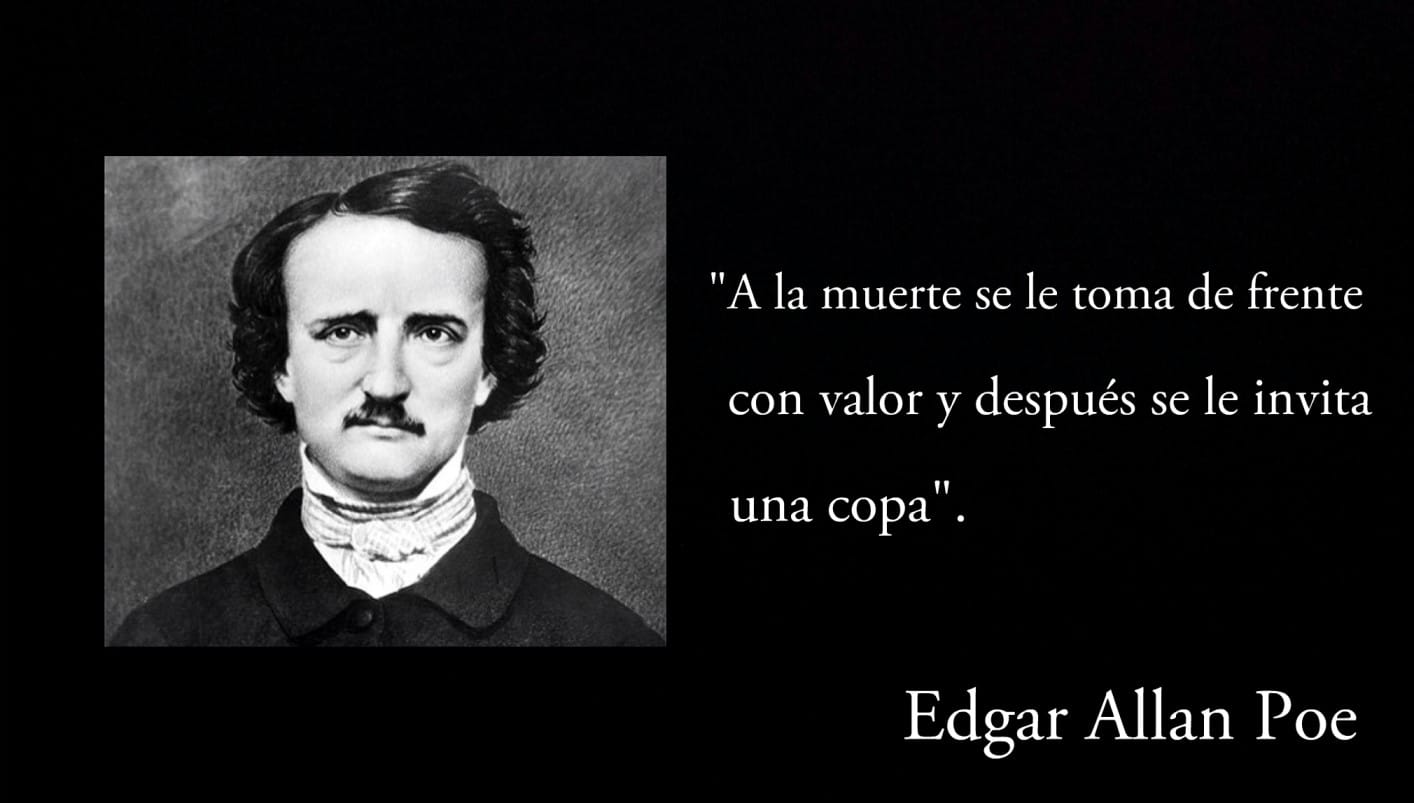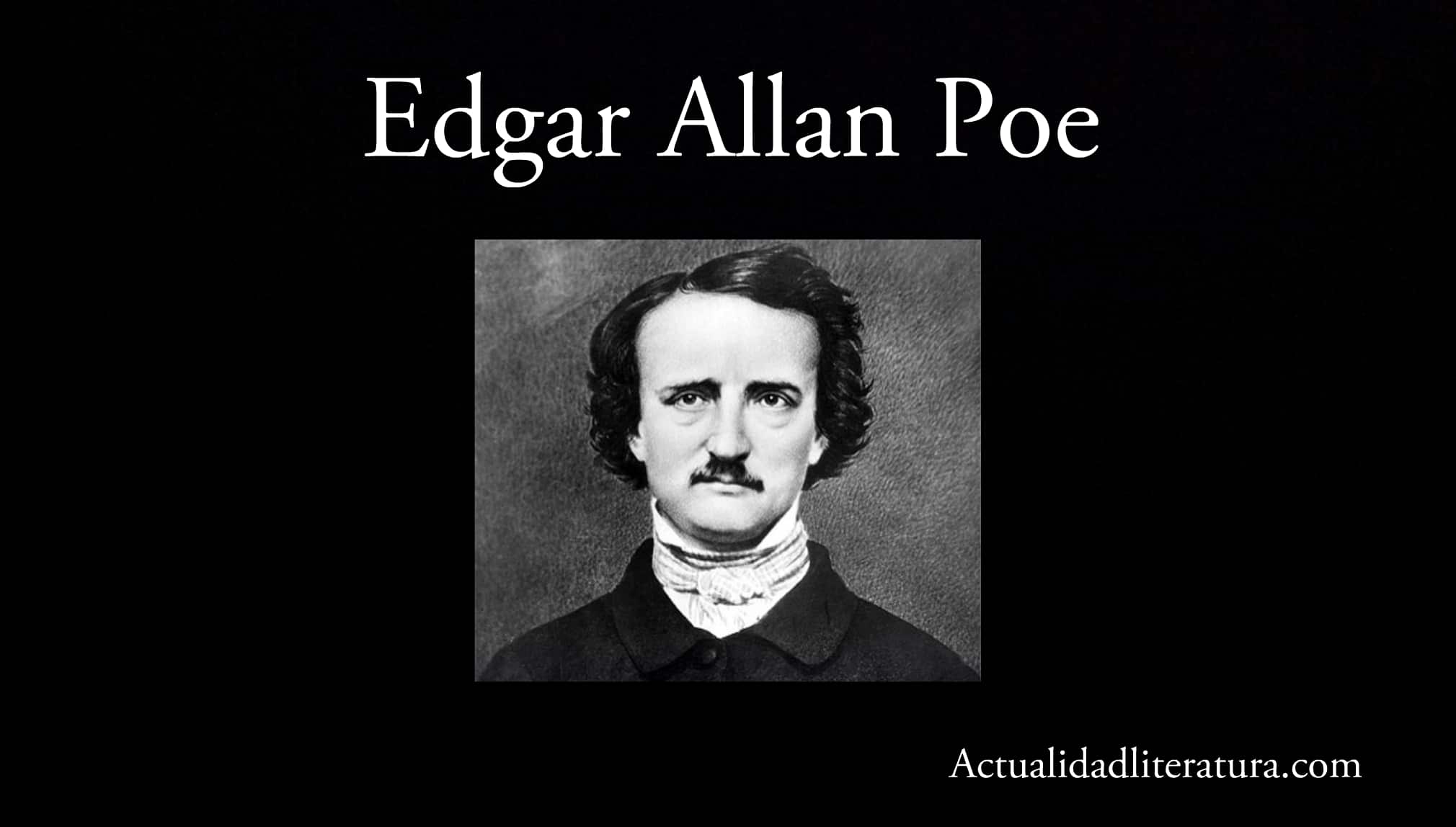
Edgar Allan Poe quote.
To talk about the stories of Edgar Allan Poe (1809 – 1849) is to explore the work of one of the immortal authors of English-language literature. Although he died relatively young—at age 40—he was able to publish twenty-six short stories, thirty-two poetic pieces, nine critical essays, and one novel. Among those, his short mystery and horror stories are particularly famous.
In addition, the Bostonian writer is considered the forerunner of two narrative genres: the crime novel and the science fiction novel. Consequently, it is impossible to escape Poe's influence on countless later writers and artists. In fact, his influence on popular culture (particularly palpable in the archetype of the modern detective) continues to this day.
Synopsis of five emblematic stories by Edgar Allan Poe
"A dream"
to dream —original name in English— was the first story published by the North American author, who signed it with a simple “P”. The story is carried by a first-person narrator who experiences mixed states of awakening and dreaming. along with moments of light and hope. Many of the protagonist's dreams are dark, others are very good, but none of them are strange to him.
In parallel, the narrator feels uncomfortable with his real life, in which he carries an evident pessimism and a toxic attachment to the past. He only gets excited while he is awake when the luminosity guides him towards a positive and pure emotion. In the end, the speaker gives more meaning to those brilliant daytime visions than to the morning light after a night of nightmares.
"The crimes of morgue Street"
The Murders in the Rue Morgue It is a foundational text for the crime novel genre. The reason: Auguste Dupin, the first modern detective in fiction, is introduced for the first time in this story. Likewise, this character is the founding prototype of the researcher based on rational analysis and scientific research for the resolution of cases.
The story revolves around the brutal murder of two women who were in a locked room. Then Dupin springs into action when someone close to him is framed for the murder. To solve the mystery, it is necessary to decipher how the perpetrator escaped, determine the origin of so much violence and explain the mysterious voice in a foreign language that the confused witnesses heard.
"The Mystery of Marie Rogêt"
The Mystery of Marie Roget represents the second appearance of Auguste Dupin (the third and last was in "The Purloined Letter"). The plot begins in 1841 with the discovery of the body of Mary Rogers —a well-known attractive girl who worked in a tobacco shop— on the hudson river. The death arouses public interest along with the emergence of various theories, gossip and even false testimonies.
Additionally, the suicide of Mary's fiancé increases speculation. Before that, Dupin leads the reader by the hand in the detailed reconstruction of the murder, from the arrangement of the victim's clothing to its transportation to the river. For this reason, some academics identify in this story a double purpose: sagacious and educational.
"The Black Cat"
At the beginning, the protagonist —in prison— claims to be sane when he describes how his existence went up in flames. Similarly, this character claims to be an animal lover since childhood (a passion shared with his wife). Consequently, he and his partner had a home full of animals, among which was a super-intelligent black cat named Pluto.
However, when he consumed alcohol he became physically and verbally aggressive towards his spouse and pets. The vice obsessed the man with the feline and began to doubt everything around him. In this way, an increasingly dark scenario is set up that inevitably leads to a hair-raising outcome.
"The Tell-Tale Heart"
The Tell-Tale Heart follows an unknown and unreliable narrator who insists on his sanity despite having just killed an old man with a "vulture eye". It was a coldly calculated murder; After consuming it, the protagonist tore the body to pieces and hid the pieces under the floorboards.
However, the guilt causes the narrator to give himself away due to a hallucination; supposedly, the murderer can still hear the heartbeat of the deceased. Besides, The relationship between victim and perpetrator is never made clear, nor is the meaning of the strange eye. In contrast, the details of the crime are exposed in detail.
About the author, Edgar Allan Poe
Birth and childhood

Edgar Allan Poe.
In Boston, Massachusetts, on Thursday, January 9, 1809, Edgar Allan Poe was born. He was the youngest of three children born to Baltimorean David Poe Jr. and British Elizabeth Arnold Poe (both were actors). In fact, the poet never knew his parentsBecause father left home shortly after birth the writer and the mother died of tuberculosis in 1812.
For this reason, little Edgar spent the rest of his childhood and adolescence in Richmond, Virginia. there andHe was under the tutelage of John Allan, a successful tobacco merchant, and his wife, Frances, with whom he formed a close bond. On the other hand, his relationship with his tutor was difficult, as he wanted Poe to continue with the family business despite the precocious poetic vocation evident in the boy.
University studies, first publications and military experience
In 1826,, Poe began attending the University of Virginia, where he earned excellent grades. But he didn't get enough money from Allan—certainly, financial matters have always caused disagreements between the writer and his tutor—to cover his studies. Therefore, the young man of letters began to bet, but he ended up in debt and had to return to the house of his tutors.
In Virginia, a new setback was achieved: his neighbor and fiancée, Sarah Elmira Royster, had become engaged to another. Dejected, Poe had a brief stay in Norfolk prior to his arrival in Boston, where he published his first book: Tamerlane and other poems (1827). It was a tough financial time for him; he first tried to make a living from journalism and then enlisted in the US Army.
Marriage
During the 1930s Poe worked as a journalist and critic alongside his firm intentions to subsist solely on writing. Most of his literary production materialized from 1835 thanks to the support of millionaire gentlemen like John P. Kennedy. That same year he married his 13-year-old cousin, Virginia Eliza Clemm (although the record indicated that she was 21).
Last years
Actually, Poe he never stabilized his finances; he frequently gave in to his addictions (mainly alcoholism). Moreover, when his wife died of tuberculosis in 1847, the couple was mired in precariousness. Finally, after several unsuccessful attempts to remarry, the poet died on October 7, 1849 for reasons never fully clarified until today.
All the stories of Edgar Allan Poe
- "A Dream", 1831
- Metzengerstein, 1832
- "Manuscript found in a bottle", 1833
- "The Plague King", 1835
- Bernice, 1835
- Ligeia, 1838
- "The Fall of the House of Usher", 1839
- William Wilson, 1839
- "The Man of the Crowd", 1840
- "A descent to the Maelström", 1841
- "The Murders of the Rue Morgue", 1841
- "The Masque of the Red Death", 1842
- "The Pit and the Pendulum, 1842
- "The Oval Portrait", 1842
- "The Golden Beetle", 1843
- «The mystery of Marie Rogêt», 1843
- "The Black Cat", 1843
- "The Tell-Tale Heart", 1843
- "The oblong box", 1844
- "The Purloined Letter", 1844
- "The Premature Burial", 1844
- "The Demon of Perversity", 1845
- "The truth about the case of Mr. Valdemar", 1845
- "The System of Dr. Tarr and Professor Fether", 1845
- "The Cask of Amontillado", 1846
- "Hop-Frog", 1849.
